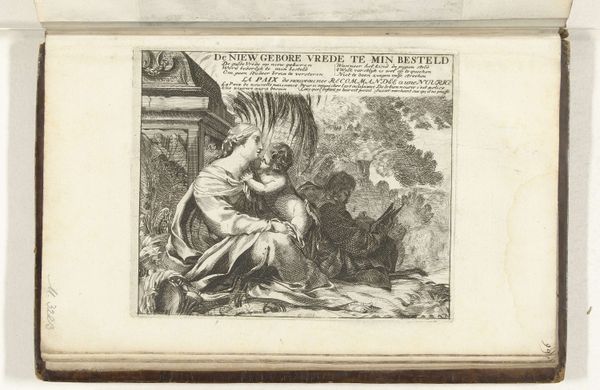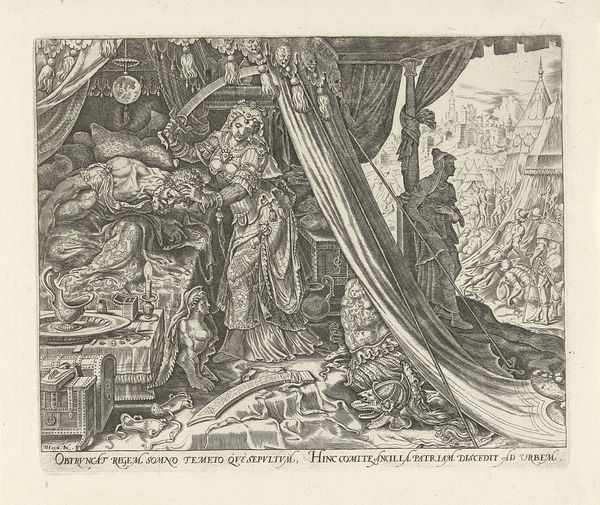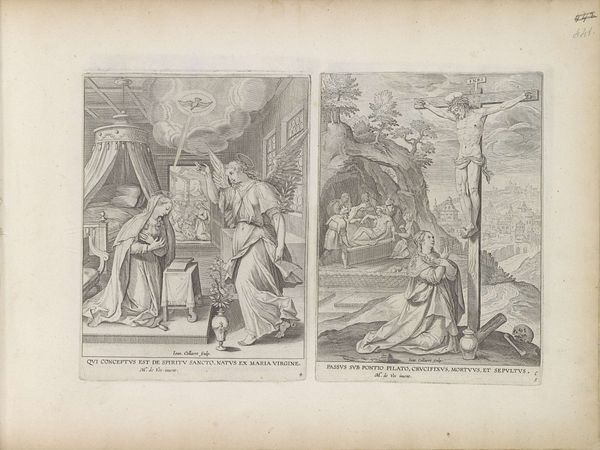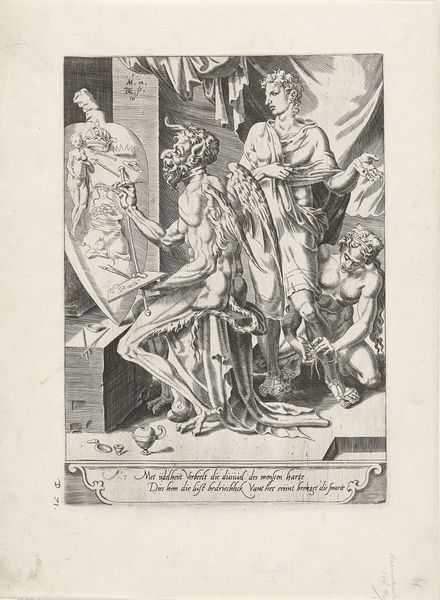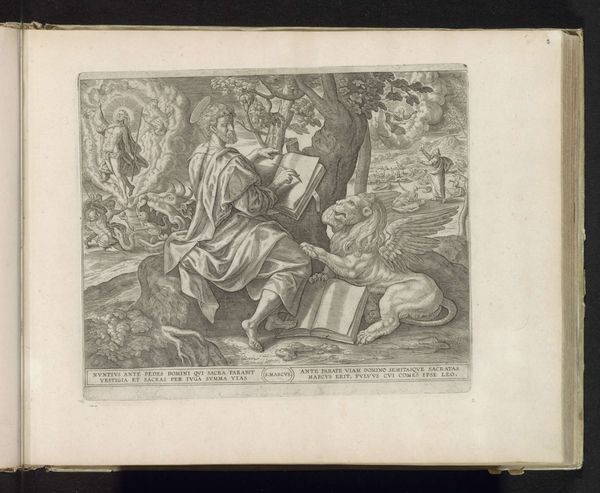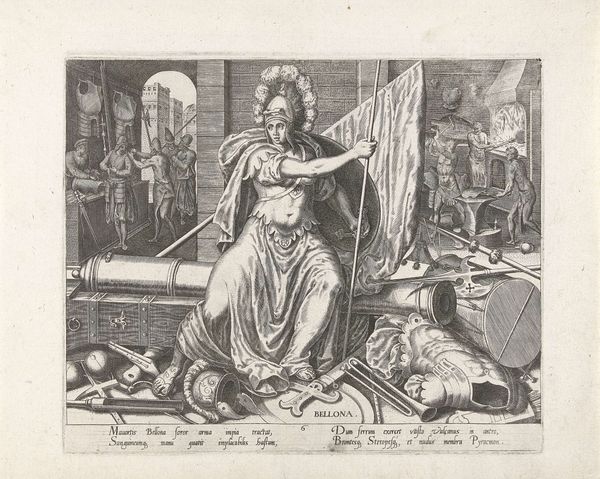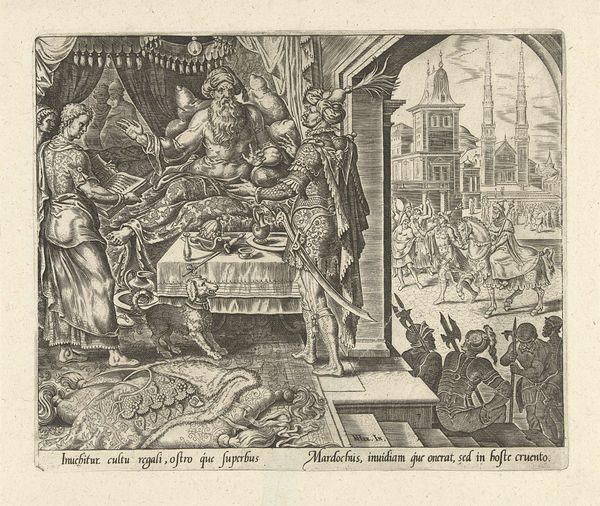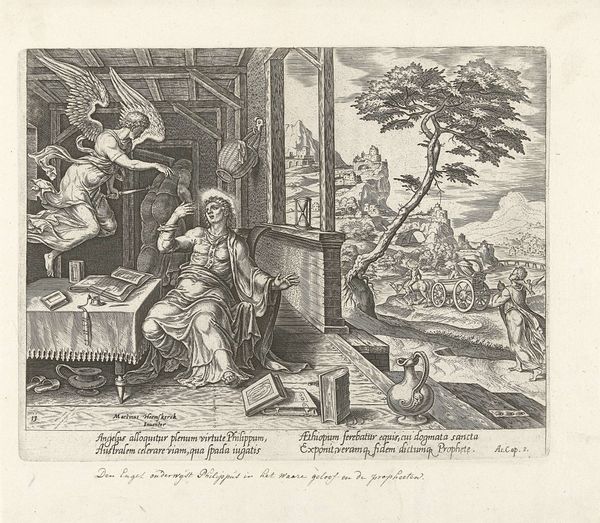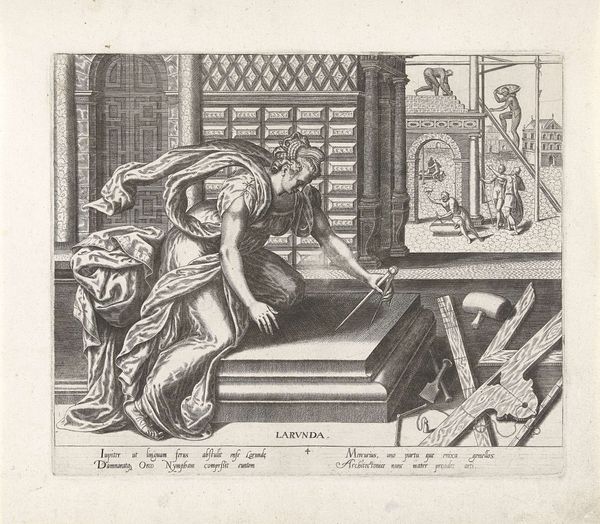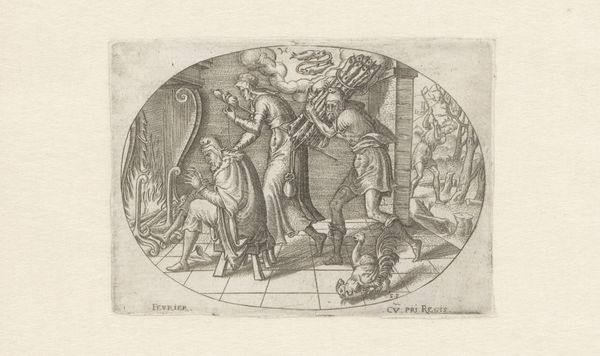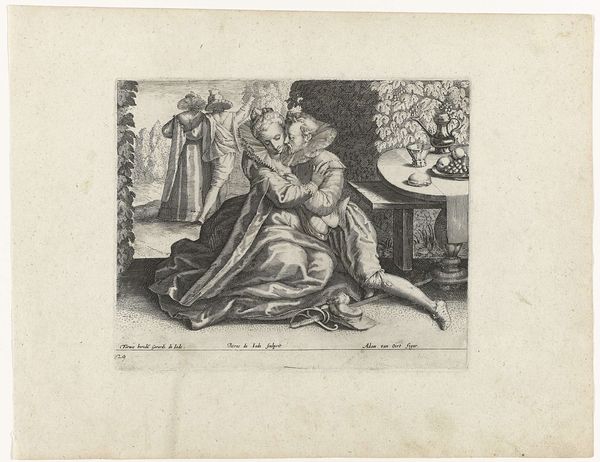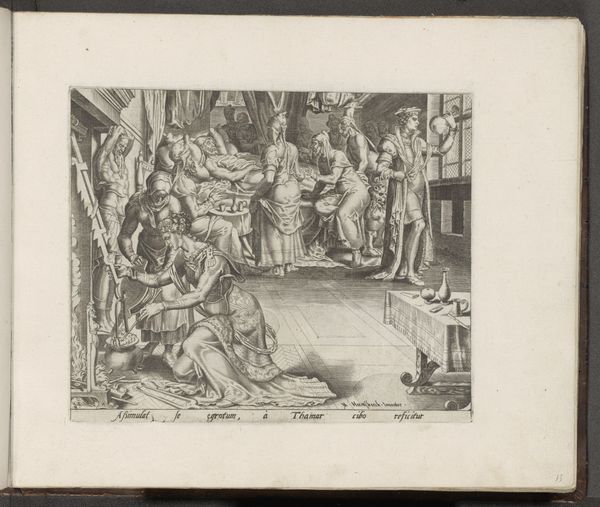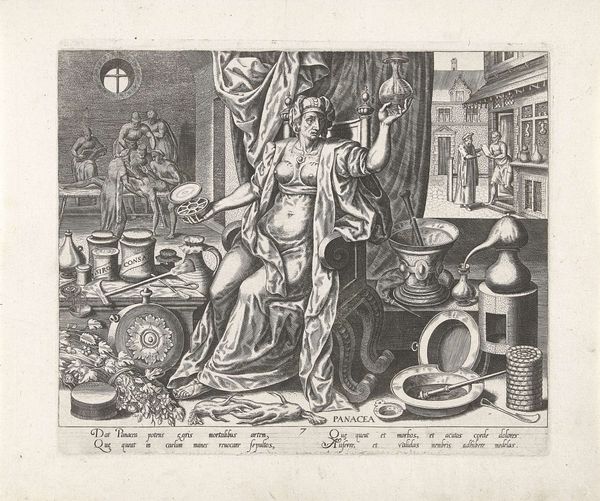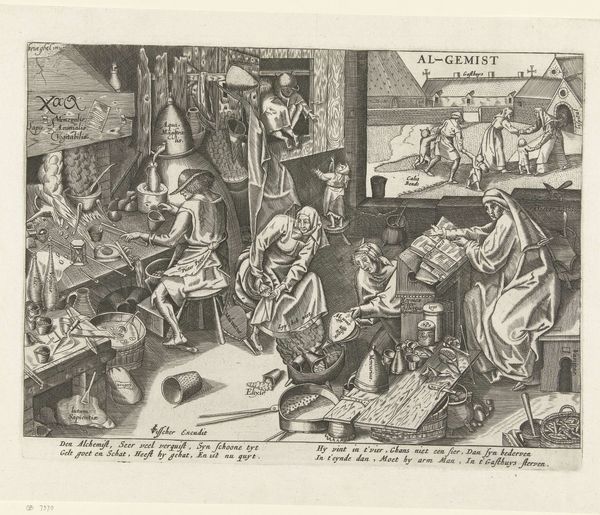
Dimensions: height 205 mm, width 247 mm
Copyright: Rijks Museum: Open Domain
Curator: This engraving from 1574 by Philips Galle, entitled "Scheepvaart en handel," which translates to "Shipping and Trade", resides in the Rijksmuseum. Editor: The density of detail is the first thing that grabs me—the multitude of objects vying for attention! It almost feels overwhelming, a controlled chaos somehow elegant because of its execution. Curator: Yes, the Baroque style is certainly present here. The image itself presents an allegory of trade and navigation in the 16th century Netherlands. This work was designed during the rise of Dutch maritime power, meant to project an image of control. Notice the seated figure Doris in the foreground? She stands as a symbol of maritime power and success, and you can feel the nationalistic pride! Editor: It’s fascinating how Galle uses the figure of Doris to convey authority. The trident suggests she's more than just a woman; it evokes dominion over the seas. Is that also a plumb bob that she rests on, in conjunction with other assorted tools of trade surrounding her? Curator: Precisely! Each item tells a story. Anchors, ropes, shipbuilding equipment—they aren't just decorations. Look at the bustling ships in the background; they are the drivers of this visual narrative. In this case the selection of classical symbols combined with very specific shipbuilding tools works in tandem. Editor: Absolutely, all these different symbols blend in together. These are representations from classical mythology, blended with representations of Dutch prosperity, a powerful visual language about commerce and a strong naval fleet. What is going on behind Doris, in that classical architecture in the top right? Curator: You noticed that too. The buildings behind her also contain reclining, semi-nude, classical figures on the upper level. The whole composition exists on a razor’s edge between celebrating the tangible realities of commerce and conjuring associations with stability by means of ancient memory. The past legitimizes the present. Editor: So the success of the Dutch Republic is deliberately tied to historical ideas and archetypes to boost this cultural-political narrative? It works well! Thank you for pointing this out to me. I never would have noticed so much detail. Curator: My pleasure! These pieces give us valuable insight into both Dutch trade, and 16th-century visual strategies of empowerment.
Comments
No comments
Be the first to comment and join the conversation on the ultimate creative platform.
